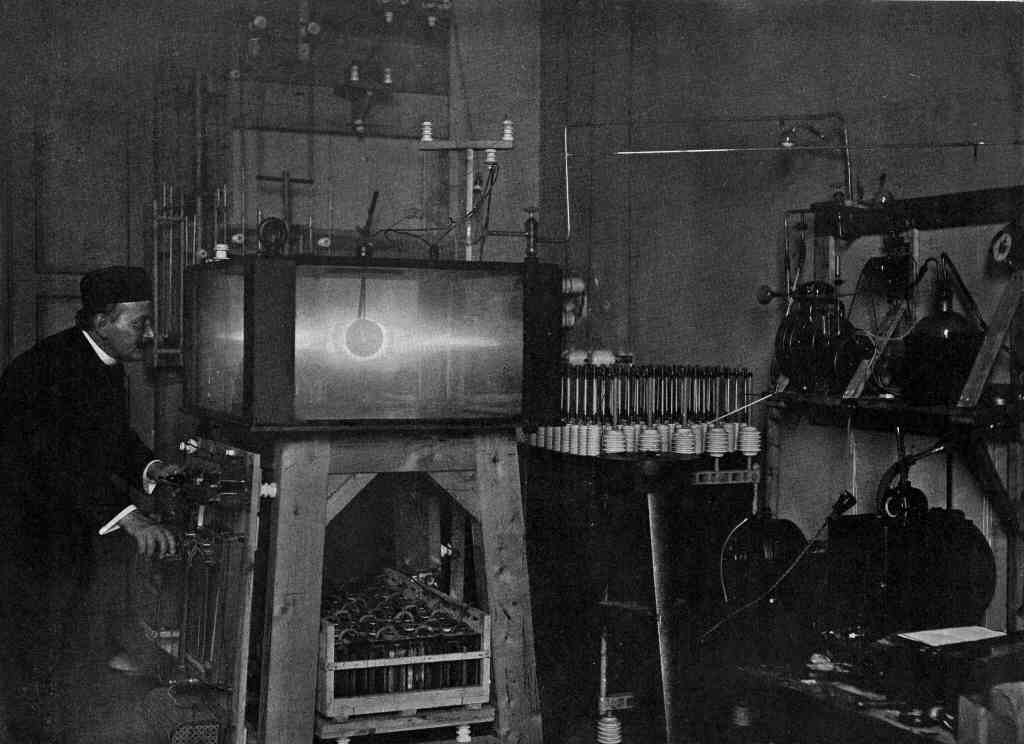Laboratory astrophysics is a branch of physics which attempts to “simulate celestial bodies in a terrestrial laboratory”. Kang et al note that:
- “Despite huge differences in time and space scales and other parameters between astronomical phenomena and laboratory environments, the idea of laboratory simulation is based on the fact that both systems are described generally by pure hydrodynamic or magnetohydrodynamic motions; thus, there exist similarities. For example, the plasma universe concept, which suggests that general laws of plasma physics hold from laboratory, magnetospheric, and heliospheric plasmas to interstellar and intergalactic plasmas, gives insight into cosmic plasma [2–4]”[1] [2]
Laboratory tools
A number of laboratory tools are used, including terrellas, pinches, dense plasma focus, electrical discharges, and lasers.[3] The field was pioneered by Kristian Birkeland whose terrellas modelled the aurora, used extensively by Hannes Alfvén, [4], and physicists such as Winston H. Bostick whose laboratory-generated plasmoids resembled galaxies.[5][6][7]
Notes
- ↑ Quote ref 2: H. Alfvén, Phys. Today 33 (9), 22 (1986). PEER REVIEWED Quote ref 3: G.-C. Falthammar, “Magnetosphere-ionosphere interactions – Near-earth manifestations of the plasma universe“, IEEE Trans. Plasma Sci. PS-14, 616 (1986). PEER REVIEWED Quote ref 4: A. L. Peratt, [Physics of the Plasma Universe (Book)|Physics of the Plasma Universe] (Springer-Verlag, New York, 1992). ACADEMIC BOOK
- ↑ Y.-G. Kang et al, “Laboratory Simulation of the Collision of Supernova 1987A with Its Circumstellar Ring Nebula” (2001) Plasma Physics Reports, Vol. 27, No. 10, 2001, pp. 843–851. PEER REVIEWED (Full text) FULL TEXT PDF
- ↑ Zakharov, Y.P., “Collisionless laboratory astrophysics with lasers” (2003) IEEE Transactions on Plasma Science, Dec. 2003, Volume: 31, Issue: 6, Part 1, pp. 1243- 1251, ISSN: 0093-3813 PEER REVIEWED
- ↑ Peratt, Anthony L., “Advances in Numerical Modeling of Astrophysical and Space Plasmas” (1997) Astrophysics and Space Science, v. 256, Issue 1/2, p. 51-75 (1997). PEER REVIEWED (Full text) FULL TEXT PDF
- ↑ Bostick, W. H., “What laboratory-produced plasma structures can contribute to the understanding of cosmic structures both large and small” (1986) IEEE Transactions on Plasma Science (ISSN 0093-3813), vol. PS-14, Dec. 1986, p. 703-717. 12/1986 PEER REVIEWED
- ↑ William H. Bostick, “Possible Hydromagnetic Simulation of Cosmical Phenomena in the Laboratory” FULL TEXT in Cosmical Gas Dynamics, Proceedings from IAU Symposium no. 8. Edited by Johannes Martinus Burgers and Richard Nelson Thomas. International Astronomical Union. Symposium no. 8, p. 1090 PEER REVIEWED
- ↑ *Bostick, W. H.; Nardi, V.; Grunberger, L.; Prior, W., “Observation of Solar Flare Type Processes in the Laboratory” FULL TEXT in Solar Magnetic Fields. Symposium no. 43, held at the College de France Paris, France, August 31 to September 4, 1970. Edited by Robert Howard. International Astronomical Union. Symposium no. 43, Dordrecht, Reidel, p.512. PEER REVIEWED
External links
- NASA Laboratory Astrophysics Workshop, NASA-Ames Research Center, Moffett Field, CA, USA, 1 – 3 May 2002
- HiPER project on Laboratory Astrophysics
- High Energy Density Laboratory Astrophysics, An Interdisciplinary Program at the University of Rochester
